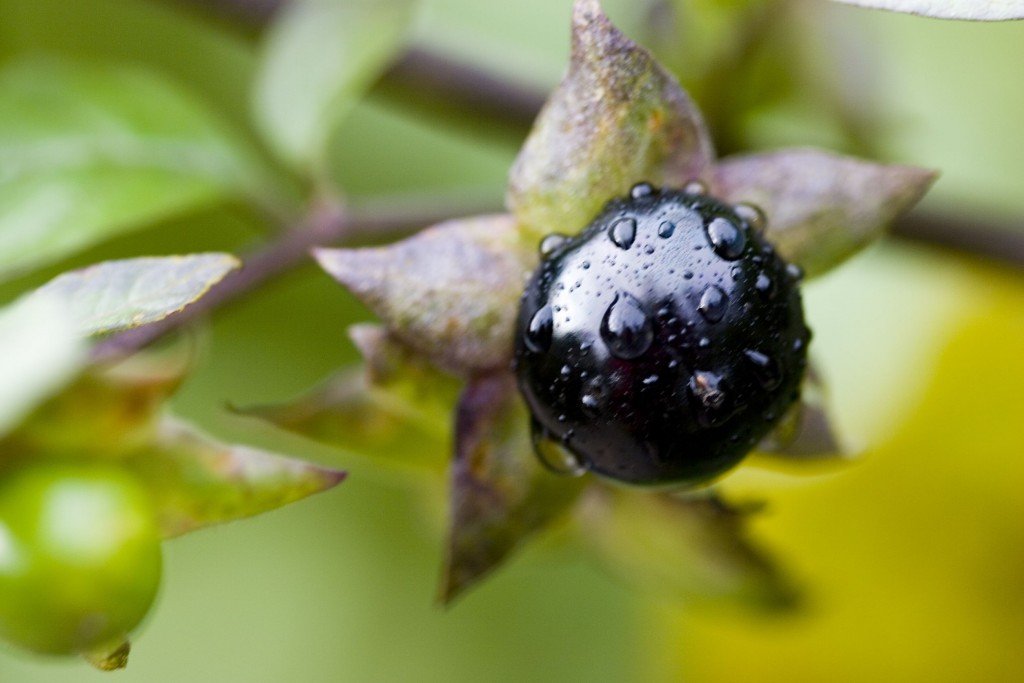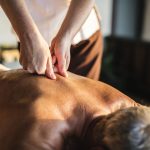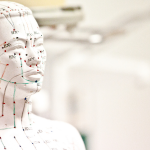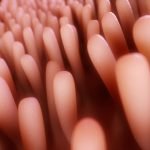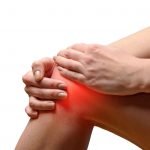Comparison With Prostatitis and Interstitial Cystitis
Jillian Stansbury, ND
Interstitial cystitis (IC) is frequently reported to affect women 5 times more often than men; however, these statistics may reflect the fact that men are often labeled as having nonbacterial chronic prostatitis rather than IC. In many cases, the symptoms of chronic nonbacterial prostatitis may be identical to and indistinguishable from the symptoms of IC in men.1 As the research on IC has advanced over the last decade, another diagnostic category of lower urinary dysfunctional epithelia (LUDE) is emerging. This article aims to review the most recent research on these related and overlapping conditions and to share some herbal therapeutic ideas.
Interstitial Cystitis
Interstitial cystitis is a chronic inflammatory disorder of the bladder mucosa with multifactorial etiologies, including autoimmune disorders, hypersensitivity disorders, and autointoxication. The symptoms of IC are those of an acute lower urinary tract infection but without an identifiable pathogen. There is a constant urge to urinate that is unrelieved by voiding and a tight, burning, or spastic sensation in the pelvis, as well as dysuria. Urinary frequency may be severe, interfering with sleep, occupations, and life in general. Although occasional bacterial infections may come and go, the severity of the symptoms is unrelated. Caffeine, acids, and artificial sweeteners seem to aggravate the symptoms but do not cause IC, and abstinence of these substances does not resolve IC. Cystoscopy findings may be normal, although this is associated more with early or mild cases, as most cases display some inflammatory tissue changes, scarring, or pus and mucosal exudates. However, there are no identifying histological markers, and patients with IC demonstrate various tissue changes, from chronic inflammatory lesions to vasodilation to fibrosis. Glomerulations and pinpoint hemorrhagic lesions are detectable in 90% of patients with IC, and mucosal ulcerations are found in about 10%. The condition may be concomitant with vulvodynia, dyspareunia, chronic noninfectious prostatitis, proctitis, or urethritis.
Men and IC
Statistics on men with IC indicate that the mean age at diagnosis is 51 years and that 60% to 75% of men with the diagnosis also experience painful ejaculation and 40% have microscopic hematuria.2 The most commonly reported symptoms were “bladder” pain (subjective suprapubic discomfort, as well as tenderness to suprapubic palpation) and anterior rectal tenderness on digital examination, urinary frequency, nocturia, and dysuria. Most men reported that their symptoms were mild at onset but progressed rapidly over several years’ time. With cystoscopic examination, most men with such symptoms may be shown to have glomerulations in the bladder mucosa. Notably, one urologic medical center reported that among almost 100 men with IC 17% had Cherokee heritage, suggesting that a genetic predisposition may contribute to the condition.
Diagnosis of IC and LUDE and the Potassium Sensitivity Test
The definitive diagnosis of LUDE is invasive, involving hydrodistension of the bladder, potassium instillation and sensitivity testing, and fiber-optic visualization, with or without biopsy of the urothelia. Biopsy specimens may reveal increased mast cells, small ulcers, pinpoint bleeding, and glomerulations. The detrusor muscle itself may also become excessively infiltrated with mast cells, which likely contributes to the urgency, frequency, and incontinent symptoms.
The potassium sensitivity test is emerging as a diagnostic tool for IC. Results of a study3 indicated that men previously diagnosed as having chronic prostatitis had much greater sensitivity to potassium than a control group of men without prostatitis symptoms, indicating that some so-called prostate symptoms actually have origins in the bladder. Potassium channels in the urinary epithelia may be excessively stimulated relative to damaged urinary epithelia. Like leaky gut syndrome and the myriad of systemic reactions that result, hyperfiring of potassium-regulated cellular functions may similarly relate to a state of “leaky” bladder epithelia.4 The urothelia are damaged, and potassium leaks into the submucosa and interstitium, resulting in stimulation of stretch receptors and the symptoms of pain, urgency, frequency, and possibly incontinence.
Some urologists and researchers are proposing the term lower urinary dysfunctional epithelia as a more accurate term that may supersede some diagnoses of IC, chronic prostatitis, overactive bladder, chronic pelvic pain, urethral syndrome, and vulvodynia.5 The typical symptoms of all these separate diagnoses may be triggered by instilling potassium in the bladder.6 Researchers reported that the subjective experience of pain following instillation of potassium in men with prostatitis was perceived at various genitourinary locales, including the perineum, lower pelvis, lower back, penis, testes, scrotum, and rectum, suggesting that the sensation is not confined to the damaged urothelia but extends or refers.6
Abnormal Neurotransmission and Immunoreactivity in LUDE
Some researchers have reported that a cannabinoid receptor is present in bladder tissue and that cannabinoid receptor agonists may reduce urinary pain and other symptoms, as well as positively affect bladder contractility. Immunoreactive nerve fibers expressing cannabinoid receptors among other neurotransmitters have been reported to be significantly increased below the urothelia and in the detrusor muscle in patients with IC compared with control subjects. This may be why LUDE in some men may respond to cannabinoid use (ie, medical marijuana).
Another novel receptor in the bladder is the menthol receptor. Similar to the ability of capsaicin to promote a sensation of heat via pain receptors and substance P release, the binding of menthol to receptors (awkwardly called TRPM8 and CMR1 by some researchers) promotes a cooling sensation. Biopsy specimens from patients with painful bladder symptoms have been shown to be overabundant in cold and menthol receptors, a finding that raises the question of whether menthol-containing herbs might trigger symptoms for patients with IC, although this is not reported anecdotally that I am aware of. Because menthol is also often a smooth muscle relaxer, I would avoid jumping to any conclusion prematurely on whether or not mints are contraindicated in IC or LUDE.
Muscarinic receptors are well known to have a role in bladder contractility. Muscarinic receptors have several subtypes, and subtypes M2 and M3 are most reported to occur in the urothelia and in the nerve fibers and detrusor layer directly underlying the urothelia. Therefore, antimuscarinic and anticholinergic agents like tropane alkaloids (such as atropine from Atropa belladonna) may have therapeutic potential for IC and LUDE, and synthetic tropane alkaloid-like agents are used pharmaceutically for the relief of overactive bladder symptoms. Acetylcholine is an agonist of muscarinic subtype M3 and is a principal stimulus for promoting urinary contraction that enables micturition; however, the overall homodynamic control of voiding involves a balance of all the muscarinic subtypes (M1, M2, M3, M4, and M5). Subtype M2, for example, may also promote contractile response of M3 by blocking cyclic adenosine monophosphate–induced relaxation. The muscarinic receptors are the primary regulator of detrusor contractility, but another mechanism involving adenosine triphosphate affects contractility. In a healthy bladder, M2 receptors are most prominent, but in some pathologic conditions (including IC and LUDE) the ratios of various subtypes may be altered and begin to dominate over the M2 receptor. Because purines, particularly caffeine, promote the adenosine triphosphate mechanism (also called the atropine-resistant component), many individuals report that drinking coffee exacerbates detrusor overactivity, urgency, and frequency in general.
Another mechanism that may contribute to urinary pain involves the so-called tyrosine-related protein receptors. These are cellular channels that can be grouped into 6 classes and are reported to be activated by physical and chemical stimuli, including voltage, heat, cold, mechanical pressures or stresses, pH, and osmolality, as well as binding by specific ligands. The tyrosine-related protein receptors are not yet well understood, but research is emerging that they too may have a role in various subjective sensations in the bladder.
Glycosaminoglycans and Bladder Mucosa Integrity
Present research suggests that abnormalities in the connective tissue matrix are necessary to regenerate bladder mucosa; bladder integrity maintenance is impaired in IC. In patients with IC, aberrations have been reported in the glycosaminoglycans (GAGs), a major component of the basement membrane of the urinary mucosa.7,8 The GAGs form a junction between the mucosal cells and prevent undesirable compounds from penetrating the mucosal cells and entering local tissues. If made incompetent owing to toxic or inflammatory processes, weakened GAG metabolism may be associated with a cascade of physiologic changes, resulting in the symptoms of IC. Because there also seems to be a familial predisposition, a genetic risk (such as an abnormality in the GAG layer of the urinary mucosa) has also been proposed. The glycoproteins that comprise the GAG layer are being identified and investigated as possible diagnostic markers in the disease. Pain fibers are stimulated, and substance P is released, promoting mast cell degranulation and further inflammation. Hypersensitivity of the nerves owing to irritation seems to follow, causing increased bladder or urethral sensitivity. Tissue toxins and irritants are believed to leak across the urinary mucosa directly or indirectly. Indirectly, compounds may cross the intestinal mucosa and induce urinary inflammation as they circulate and trigger inflammatory or autoimmune reactions.9,10 Many autoimmune disorders are being investigated for the contribution of antibodies to heavy metal toxic effects, endotoxins, and environmental toxins, cross-reacting with myelin and promoting numerous connective tissue diseases, such as multiple sclerosis, arthritis, lupus, scleroderma, IC, and inflammatory bowel disease.
Pharmaceutical Therapy for LUDE
Thus far, the only pharmaceutical approved specifically for IC is pentosan polysulfate sodium.11 Pentosan polysulfate is a synthetic analogue of heparin, both of which are sulfur-rich GAGs, that seems to help restore mucosal integrity in the bladder. Pentosan polysulfate is poorly absorbed, and only small amounts reach the urinary mucosa so that this drug must be used long term to achieve any lasting improvements. Glucosamine sulfate is also being investigated to see whether it might improve IC. Local application of another sulphate, dimethyl sulfoxide, has been instilled in the bladder during cystoscopy, where it may act as a methyl donor and assist mucosal repair. Methionine, S-adenylmethionine, N-acetylcysteine, choline, phosphatidylcholine, lecithin, and methylsulfonylmethane are used in naturopathic medicine to reduce inflammation in connective tissue, as well as provide detoxifying support for the liver and central nervous system. These supplements may also prove valuable for IC by acting as sources of sulfur to help restore the GAGs. Current GAG research is noting a correlation between potassium levels locally and increased mucosal sensitivity. Abnormally elevated potassium levels may induce heightened nervous and electrical sensitivity.12,13
Other oral medications for IC and LUDE are mentioned in the allopathic literature. These include antihistamines, tricyclic antidepressants, immunomodulators, and the anticholinergics previously mentioned for relief of overactive bladder symptoms owing to their ability to bind muscarinic receptors and help relax inappropriate contraction of urinary muscles.
Anticholinergic Medications
Atropine, scopolamine hydrobromide, hyoscyamine, and other antimuscarinics to relax excessive bladder contraction have many systemic adverse effects (dry mouth, mydriasis, vasodilation, blurred vision, constipation, tachycardia, and central nervous system effects) and are problematic for use as herbal medicines. Pharmaceutical analogues in current practice are tolterodine and oxybutynin because they have specificity to muscarinic receptor subtypes M2 and M3 and have fewer systemic adverse effects than whole plants with broader activity. Darifenacin is a new M3 selective antagonist that has selectivity for the bladder over the salivary gland in vivo. Nonetheless, the inclusion of small amounts of belladonna or Hyoscyamus tincture in a formula may yield symptomatic relief at a dosage small enough to avoid undesired systemic effects. The use of rectal, vaginal, and urethral suppositories have the fewest adverse effects compared with various oral antimuscarinics. I have made belladonna suppositories for individual patients, with good results. Of the various Solanaceae family (nightshade) tropane alkaloids, Hyoscyamus nigra has the greatest specificity for the urinary passages according to folkloric literature, with A belladonna being more emphasized for digestive and skeletal muscle spasms. Hyoscyamus nigra is an extremely strong herb with great toxic potential but is especially indicated for severe spasms of the urinary tract and is of value to experienced herbal clinicians.
However, the anticholinergics only help relieve acute symptoms and do not, by all evidence, halt the progression of the disease or restore the health and integrity of the leaky urothelia. Agents with the greatest likelihood of repairing the urothelium are the sulfur-containing glucosamine-like compounds (chondroitin sulfate sodium, pentosan polysulfate, and hyaluronic acid), asparagine (a sulfur-containing amino acid–like alkaloid), and mannose and other carbohydrates that support glycosamine synthesis and cell-to-cell linkage.
Antiallergy Botanicals
Because many men and women who experience IC also have digestive and allergic symptoms, such as hay fever, asthma, or inflammatory bowel disease, proposed etiologies include an endotoxin, antigen-antibody reaction, autoimmune reaction to an antigen or antibody, allergic hypersensitivity, and similar origins. Histamine is well noted to loosen gap junctions between cells; therefore, abnormally elevated histamine levels may contribute to the development of leaky epithelia. Furthermore, antihistamine medications have been shown to relieve symptoms of some patients with IC. Recent evidence supports increased mast cells and inflammatory compounds in the bladder mucosa in those with IC. Mast cell stabilizers, such as the pharmaceutical hydroxyzine, are helpful for some but may be somewhat sedating. Chromolyn sodium also may have beneficial mast cell–stabilizing effects. Chromolyn sodium is the basis of some inhalers and is a pharmaceutical copy of khellin, a flavonoid in khella (Ammi visnaga) used for centuries as an antispasmodic for bronchial and urinary passages. Khella is a member of the Umbell family, and other Umbells, such as Apium graveolans (celery) and Petroselinum (parsley), are noted to reduce urinary pain and infections. Apium and Petroselinum are also mentioned in the homeopathic literature for treatment of chronic urinary discomfort. Because of their ability to provide sulfur and to act as mast cell stabilizers, Allium cepa and Allium sativum are other antiallergy botanicals to consider. Other mast cell stabilizers include G glabra (licorice), Tanacetum parthenium (feverfew), and Ginkgo biloba. Where possible, tea of these and other appropriate botanicals should be included in the overall protocol because in the aqueous vehicle they may have direct surface contact with the urinary mucosa.
Other Botanical Considerations for LUDE
Centella asiatica (Gotu Kola)
Centella asiatica (gotu kola) is a nourishing succulent green leafy botanical that is native to India. Centella has been used traditionally as something of panacea for general strength and longevity. Centella has been widely used for wound healing, including bone, skin, joint, and other tissues. Centella is also specifically recommended for ulcerative and inflammatory conditions of the cystic, gastric, esophageal, intestinal, rectal, and oral mucosal surfaces. Skin injuries, including burns, lacerations, keloid formation, eczema, psoriasis, and other forms of dermatitis, may also respond to Centella. Recently, Centella has been reported to improve aberrant fibroblast activity in the skin and connective tissue, as seen with scleroderma, lupus, and other autoimmune diseases; earlier research has shown that Centella promotes formation of new connective tissue, hyaluronic acid, and chondroitin sulfate.14,15 Because of its history as an ulcer and mucous membrane remedy, plus possible benefits of immune and inflammatory stabilization, Centella may benefit patients with IC.
Piper methysticum (Kava)
Piper methysticum (kava) is a member of the Piperaceae (pepper) family and is used as an anxiolytic and ceremonial social beverage in the Fiji islands, where it is indigenous. The Lloyd Brothers (http://www.lloydlibrary.org/archives/inventories/lloyd_brothers_pharmacists.pdf), well-respected manufacturing pharmacists of the early 1900s, claimed that kava was specific for soothing irritated genitourinary structures. Kava inhibits sodium and calcium channels, and it may alter potassium potentials, as it has been shown clinically to be an effective urinary antispasmodic, although the mechanism is speculative. Kava is known to be anesthetic to the oral mucosa, and the lactones (or pyrones) have been shown to be responsible,16 but again the precise mechanism is unknown. It is likely that kawain, a kava lactone, works in a manner similar to cocaine. Kava may have some activity at γ-aminobutyric acid receptors17 and at glycine receptors,18 both provoking a sedative muscle-relaxing effect. Kava has been noted to prevent strychnine-induced convulsions,19 indicating that it may have some effects on indolamines or on tryptophan and glycine metabolism. Kava also affects potassium channel activity. It reduces potassium uptake and activity, which may be a reason why P methysticum is a classic urinary anodyne. Its anesthetic effect relieves irritation of the bladder, improving dysuria and the ability to completely empty the bladder. Kava may even assist in the passage of kidney stones by quieting spasms in the ureters.
Equisetum arvense (Horsetail)
Equisetum arvense (horsetail) promotes urinary excretion of potassium and is a classic connective tissue tonic mentioned in folkloric botanical and homeopathic literature for hematuria. Felter recommends Equisetum for “cystic irritation, tenesmic urging to urinate; nocturnal urinary incontinence; renal and calculi.”21(p) The silica and silicic acid in Equisetum are notably high (6.0% and 0.6%, respectively), which is thought to enhance connective tissue restoration. Silica may also help the kidneys excrete heavy metals and other wastes, improving toxicity, hypersensitivity, and autoimmune reactivity. Topical application in the form of tub soaks and sitz baths has been used historically for musculoskeletal, arthritic, and autoimmune disorders. Equisetum contains the anti-inflammatory and antiallergic flavonoids isoquercitin and equicetrin, which may reduce allergic phenomena. Historical uses for Equisetum center around connective tissues, including bones, joints, bladder mucosa, skin, hair, and fingernails.
Agropyron repens (Couch Grass)
Agropyron repens (couch grass) is a weak diuretic that is capable of improving urinary irritation, frequency, and dysuria. It is indicated for incontinence due to urinary irritation, purulent cystitis, hematuria, and strangury,20 as well as pyelitis and kidney irritation. Eclectic authors, such as Felter and Scudder, recommended Agropyron for prostatitis, prostatic adenoma,21 prostatic enlargement, and gonorrhea.20
Agropyron is specifically indicated for treatment of an intense burning sensation and a constant desire to urinate.20 Agropyron is high in mannose, which prevents bacterial adherence to bladder epithelium.22 Agropyron contains about 3% inositol and mannitol.23 Mannitol is believed to be the reduction product of mannitol. Mannitol is also prevalent in Aloe vera and is presently marketed as an immunopotentiator and as something of a heal-all. Apart from its mucilage, Agropyron also contains agropyrene, a terpenoid credited with antimicrobial action.
Apis relieves constant tenesmic pain in the bladder and urethra, as well as burning and stinging. Material doses are suggested for edema and renal engorgement; 3× dilutions are suggested for bladder irritation. Placement of ½ dram of Apis tincture in half a glass of water is sufficiently dilute when taken by the teaspoonful every hour.
Glycyrrhiza glabra (Licorice)
Glycyrrhiza glabra (licorice) has anti-inflammatory and immunomodulatory properties. It enhances gastrointestinal mucous membrane secretion and protection, heals ulcerations and mucosal irritations, and may have similar effects on the urinary mucosa.
Hydrangea arborescens (Hydrangea)
Hydrangea arborescens (hydrangea) is recommended for acute and chronic renal problems. It is especially useful for cases in which there is an increase in urinary phosphates and alkaline urine.
Finley Ellingwood suggested the use of Hydrangea in patients whose urine is cloudy with phosphates and urates, claiming that it promotes elimination of crystals and reduces a tendency to form calculi. Hydrangea is specifically indicated for frequency, dysuria, and shooting pains in the urethra. Felter21 recommended Hydrangea for patients having bladder or urethral irritation and inflammation with blood and gravel present in the urine. Primarily, Hydrangea has a history of use for urinary calculi and associated pain. It is used to restore the urinary mucosa and may be of value in patients with IC. Hydrangea is one of the few botanicals that is thought to be safe during acute infections and inflammations or during an episode of renal colic. Hydrangea is said to be most effective when taken as hot tea and was combined with P methysticum (kava), Cimicifuga (macrotys), and Gelsimium in eclectic formulas of the early 1900s.24
Serenoa repens (Saw Palmetto)
Serenoa repens (saw palmetto) has been widely discussed in naturopathic medicine as an herbal therapy for treating benign prostatic hypertrophy and for correcting underlying hormonal contributors.25-28 The research on liposterols in the plant has led to the development of synthetic drugs, such as finasteride. However, Serenoa has long been recommended for atony or weakening of urinary organs, such as occurs in older persons or in women after menopause. Serenoa promotes the flow of urine and has been recommended to treat loss of genitourinary tone. Serenoa inhibits the formation of dihydrotestosterone owing to its liposterol content and is highly regarded in herbal medicine for treatment of prostatic enlargement due to adenoma and benign hyperplasia.27,28-30
Solidago Species (Goldenrod)
In Germany, Solidago species (goldenrod) have been referred to as “the plant catheter” because of their reliable ability to diurese. The German physician and author R. F. Weiss mentioned Solidago for treatment of pathologic conditions of the bladder that are of nervous origin, including abnormal detrusor muscle and sphincter tone. Weiss believed that Solidago improves autonomic function of urinary viscera. Solidago is specific for dysuria due to spasm and tenesmus.29 Pollen extracts of Solidago are used in Germany for chronic prostatitis, and the high bioflavonoid content may provide anti-inflammatory and vascular stabilizing effects. Research findings suggest that Solidago antagonizes M2 and M3 muscarinic receptors,30 promoting detrusor relaxation and treating frequency, urgency, and overactive bladder. Dried and tinctured Solidago flowers produce abundant amounts of pollen. Pollen itself is reported to have therapeutic effects on the prostate gland,31 and a clinical trial found that pollen extracts significantly improved the symptoms of chronic prostatitis and chronic pelvic pain.32 Pollen is high in phytosterols and in flavonoids, both of which may contribute to the therapeutic effects on the prostate. Antineoplastic effects against prostatic tumors have also been reported with injected Solidago.33
 Jillian Stansbury, ND has practiced in SW Washington for nearly 20 years, specializing in women’s health, mental health and chronic disease. She holds undergraduate degrees in medical illustration and medical assisting, and graduated with honors in both programs. Dr. Stansbury also chaired the botanical medicine program at NCNM and has taught the core botanical curricula for more than 20 years. In addition, Dr. Stansbury also writes and serves as a medical editor for numerous professional journals and lay publications, plus teaches natural products chemistry and herbal medicine around the country. At present she is working to set up a humanitarian service organization in Peru and studying South American ethnobotany. She is the mother of two adult children, and her hobbies include art, music, gardening, camping, international travel and studying quantum and metaphysics.
Jillian Stansbury, ND has practiced in SW Washington for nearly 20 years, specializing in women’s health, mental health and chronic disease. She holds undergraduate degrees in medical illustration and medical assisting, and graduated with honors in both programs. Dr. Stansbury also chaired the botanical medicine program at NCNM and has taught the core botanical curricula for more than 20 years. In addition, Dr. Stansbury also writes and serves as a medical editor for numerous professional journals and lay publications, plus teaches natural products chemistry and herbal medicine around the country. At present she is working to set up a humanitarian service organization in Peru and studying South American ethnobotany. She is the mother of two adult children, and her hobbies include art, music, gardening, camping, international travel and studying quantum and metaphysics.
References
- Chung MK, Butrick CW, Chung CW. The overlap of interstitial cystitis/painful bladder syndrome and overactive bladder. JSLS. 2010;14(1):83-90.
- Forrest JB, Schmidt S. Interstitial cystitis, chronic nonbacterial prostatitis and chronic pelvic pain syndrome in men: a common and frequently identical clinical entity. J Urol. 2004;172(6, pt 2):2561-2562.
- Parsons CL, Rosenberg MT, Sassani P, Ebrahimi K, Koziol JA, Zupkas P. Quantifying symptoms in men with interstitial cystitis/prostatitis, and its correlation with potassium-sensitivity testing. BJU Int. 2005;95(1):86-90.
- Parsons CL. The role of a leaky epithelium and potassium in the generation of bladder symptoms in interstitial cystitis/overactive bladder, urethral syndrome, prostatitis and gynaecological chronic pelvic pain. BJU Int. 2011;107(3):370-375.
- Parsons CL. Prostatitis, interstitial cystitis, chronic pelvic pain, and urethral syndrome share a common pathophysiology: lower urinary dysfunctional epithelium and potassium recycling. Urology. 2003;62(6):976-982.
- Parsons CL, Albo M. Intravesical potassium sensitivity in patients with prostatitis. J Urol. 2002;168(3):1054-1057.
- Nickel JC, Emerson L, Cornish J. The bladder mucus (glycosaminoglycan) layer in interstitial cystitis. J Urol. 1993;149(4):716-718.
- Wilson CB, Leopard J, Nakamura RM, Cheresh DA, Stein PC, Parsons CL. Selective type IV collagen defects in the urothelial basement membrane in interstitial cystitis J Urol. 1995;154(3):1222-1226.
- Ochs RL, Stein TW Jr, Peebles CL, Gittes RF, Tan EM. Autoantibodies in interstitial cystitis J Urol. 1994;151(3):587-592.
- Fowler JE Jr, Lynes WL, Lau JL, Ghosh L, Mounzer A. Interstitial cystitis is associated with intraurothelial Tamm-Horsfall protein. J Urol. 1988;140(6):1385-1389.
- Holm-Bentzen M, Jacobsen F, Nerstrøm B, et al. A prospective double-blind clinically controlled multicenter trial of sodium pentosanpolysulfate in the treatment of interstitial cystitis and related painful bladder disease. J Urol. 1987;138(3):503-507.
- Payne CK, Browning S. Graded potassium chloride testing in interstitial cystitis [abstract]. J Urol. 1996;155(suppl):438A.
- Parsons CL. Potassium sensitivity test. Tech Urol. 1996;2:171-173.
- Monograph: Centella asiatica. Milan, Italy: Indena SpA; 1987.
- Lawrence JC. The morphological and pharmacological effects of asiaticoside upon skin in vitro and in vivo. Eur J Pharmacol. 1967;1(5):414-424.
- Kava. In: DerMarderosian A, ed. Facts and Comparisons: The Review of Natural Products. St Louis, MO: Facts and Comparisons. December 1999.
- Boonen G, Häberlein H. Influence of genuine kavapyrone enantiomers on the GABA-A binding site. Planta Med. 1998;64(6):504-506.
- Davies L, Drew C, Duffield P, Jamieson D. Effects of kava on benzodiazepine and GABA receptor binding. Eur J Pharmacol. 1990;183(2):504.
- Kretzschmar R, Meyer HJ, Teschendorf HJ. Strychnine antagonistic potency of pyrone compounds of the kava root (Piper methysticum Forst.). Experientia. 1970;26(3):283-284.
- Felter HW. The Eclectic Materia Medica, Pharmacology and Therapeutics. Sandy, OR: Eclectic Medical Publications; 1983. First published in 1922.
- Scudder JM. Lloyd Brothers pharmaceutical label for gonorrhea. Cincinnati, OH: Lloyd Brothers; 1880s.
- Wright JV. Lecture. In: Proceedings from the 10th Annual Convention of the American Association of Naturopathic Physicians; October 1995; Snowmass Village, CO.
- Leung AY, Foster S. Encyclopedia of Common Natural Ingredients in Food, Drugs, and Cosmetics. 2nd ed. New York, NY: John Wiley & Sons; 1996:213.
- Leibstein. Article on urinary tonics. Eclectic Med Assoc Q. 1904.
- Tasca A, Barulli M, Cavazzana A, Zattoni F, Artibani W, Pagano F. Treatment of obstructive symptomatology caused by prostatic adenoma with an extract of Serenoa repens: double-blind clinical study vs. placebo [in Italian]. Minerva Urol Nefrol. 1985;37(1):87-91.
- Champault G, Patel JC, Bonnard AM. A double-blind trial of an extract of the plant Serenoa repens in benign prostatic hyperplasia. Br J Clin Pharmacol. 1984;18(3):461-462.
- Boccafoschi C, Annoscia S. Comparison of Serenoa repens extract with placebo by controlled clinical trial in patients with prostatic adenomatosis. Urologia. 1983;50:1257-1259.
- Carilla E, Briley M, Fauran F, Sultan C, Duvilliers C. Binding of Permixon, a new treatment for prostatic benign hyperplasia, to the cytosolic androgen receptor in the rat prostate. J Steroid Biochem. 1984;20(1):521-523.
- Melzig MF. Goldenrod: a classical exponent in the urological phytotherapy [in German]. Wien Med Wochenschr. 2004;154(21-22):523-527.
- Borchert VE, Czyborra P, Fetscher C, Goepel M, Michel MC. Extracts from Rhois aromatica and Solidaginis virgaurea inhibit rat and human bladder contraction. Naunyn Schmiedebergs Arch Pharmacol. 2004;369(3):281-286.
- Wagenlehner FM, Bschleipfer T, Pilatz A, Weidner W. Pollen extract for chronic prostatitis–chronic pelvic pain syndrome. Urol Clin North Am. 2011;38(3):285-292.
- Wagenlehner FM, Schneider H, Ludwig M, Schnitker J, Brähler E, Weidner W. A pollen extract (Cernilton) in patients with inflammatory chronic prostatitis–chronic pelvic pain syndrome: a multicentre, randomised, prospective, double-blind, placebo-controlled phase 3 study. Eur Urol. 2009;56(3):544-551.
- Gross SC, Goodarzi G, Watabe M, Bandyopadhyay S, Pai SK, Watabe K Antineoplastic activity of Solidago virgaurea on prostatic tumor cells in an SCID mouse model. Nutr Cancer. 2002;43(1):76-81.

